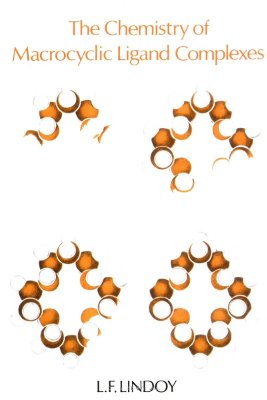Cambridge Press. 1989. 277 p.
The study of macrocyclic ligand systems represents a major activity impinging on a wide range of areas in chemistry and biochemistry. This book contains an overview of the macrocyclic ligand systems and discusses the structure and properties of macrocyclic systems; the synthesis of macrocycles; polyether crown and related systems; metal-ion and molecular recognition (host-guest chemistry); and kinetic, thermodynamic, and electrochemical aspects of these complexes. The author also covers the various categories of synthetic and naturally occuring macrocycles.
Contents
What is different about macrocyclic ligand complexes
Synthetic procedures
Macrocyclic systems - some further categories
The metal-ion chemistry of polyether and related macrocyclic systems
Host-guest chemistry: macrocyclic hosts and non-metallic guests
Thermodynamic considerations
Kinetic and mechanistic considerations
Redox properties
The natural macrocycles
References
The study of macrocyclic ligand systems represents a major activity impinging on a wide range of areas in chemistry and biochemistry. This book contains an overview of the macrocyclic ligand systems and discusses the structure and properties of macrocyclic systems; the synthesis of macrocycles; polyether crown and related systems; metal-ion and molecular recognition (host-guest chemistry); and kinetic, thermodynamic, and electrochemical aspects of these complexes. The author also covers the various categories of synthetic and naturally occuring macrocycles.
Contents
What is different about macrocyclic ligand complexes
Synthetic procedures
Macrocyclic systems - some further categories
The metal-ion chemistry of polyether and related macrocyclic systems
Host-guest chemistry: macrocyclic hosts and non-metallic guests
Thermodynamic considerations
Kinetic and mechanistic considerations
Redox properties
The natural macrocycles
References

